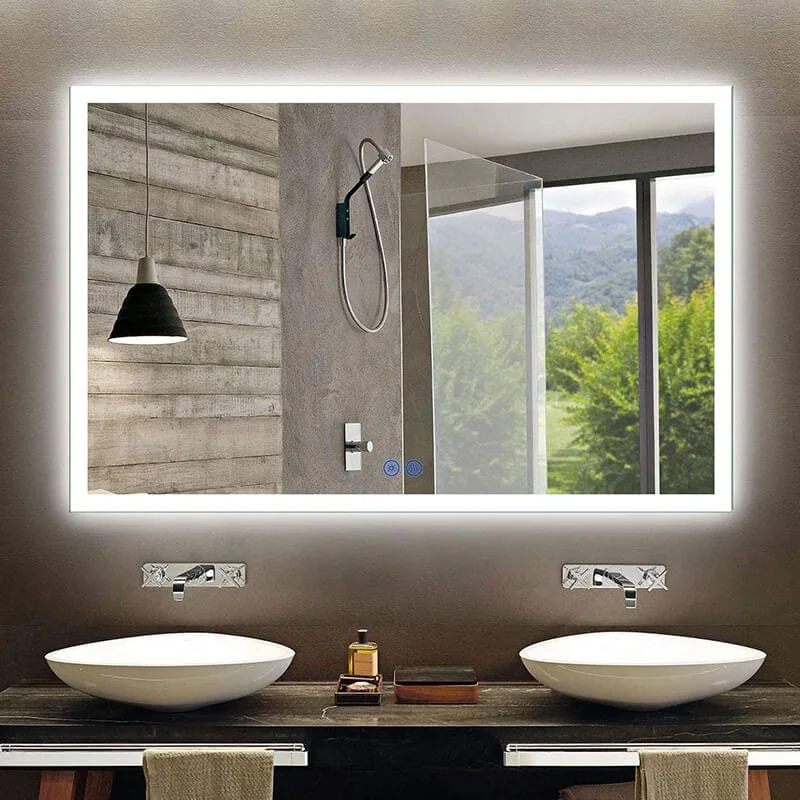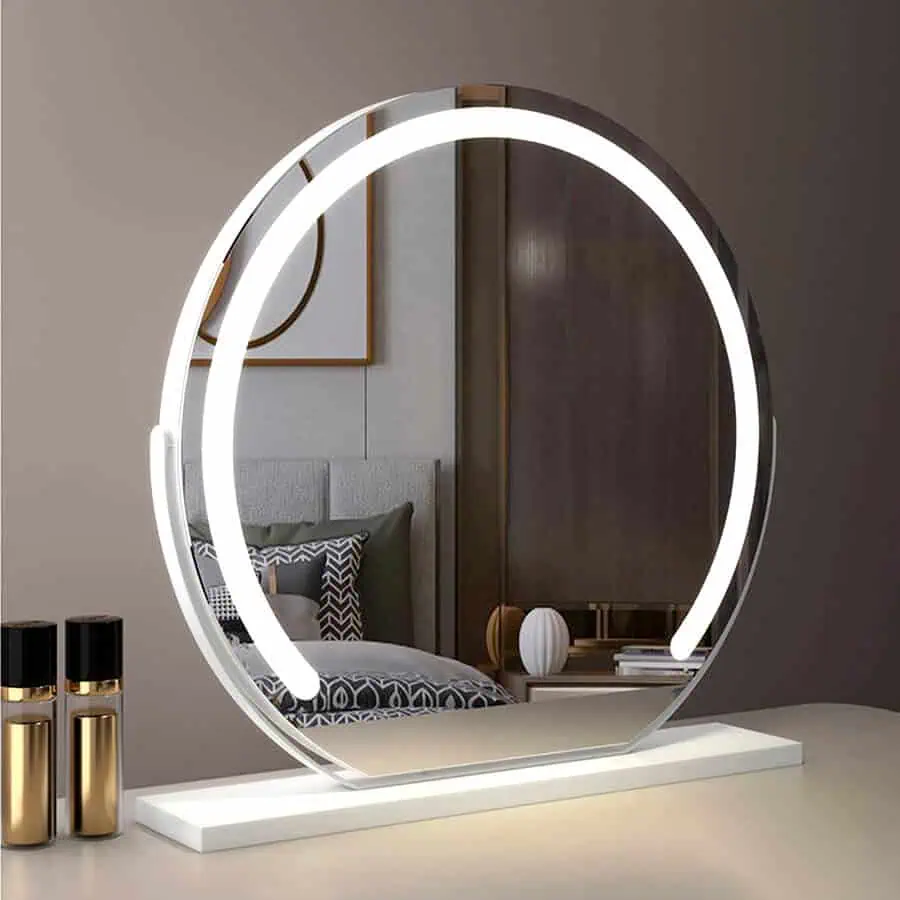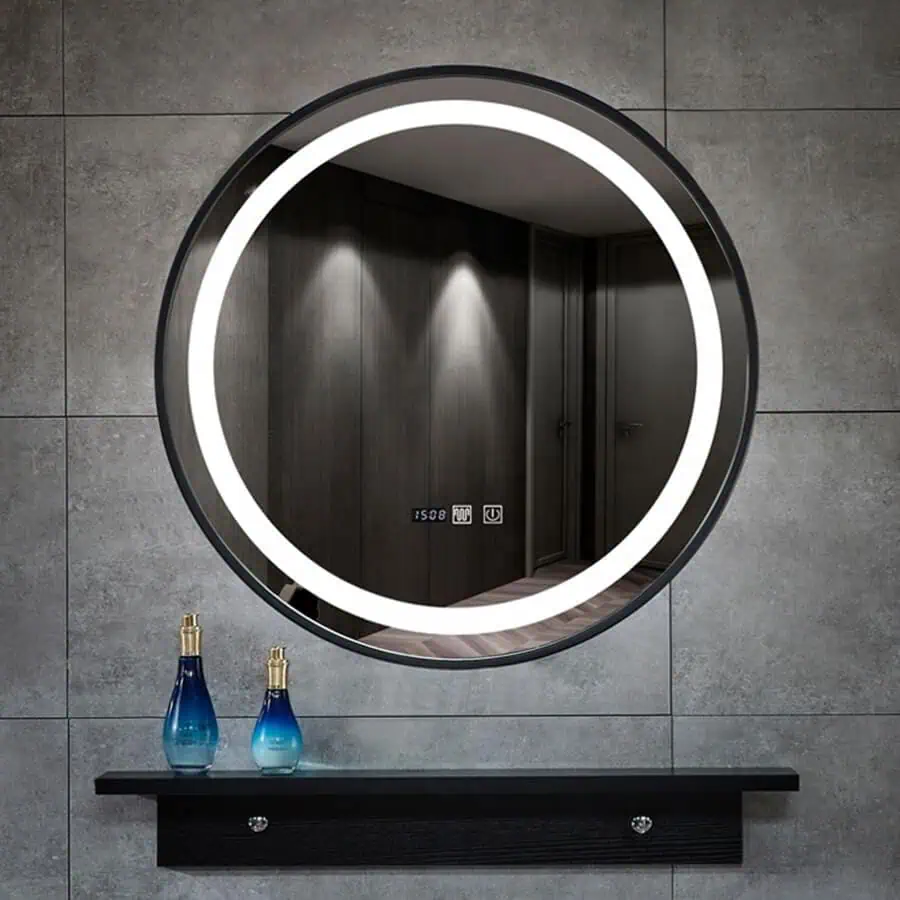Are you intrigued about how LED mirrors illuminate your room while providing a sleek, modern appearance? Understanding the science behind these unique mirrors may make a significant impact in your bathroom or vanity area. In this post, we’ll go over how LED mirrors operate and why they’re becoming increasingly popular for both residential and business applications.
How do LED mirrors work? By using energy-efficient LEDs placed around or behind the mirror surface. These LEDs shine onto a diffusion panel, spreading the light evenly for bright, uniform illumination. The result is clearer visibility and a stylish, modern touch to any room.
Let’s take a closer look at how LED mirrors work, the benefits they provide, and why they’ve become the preferred option for many households and businesses.
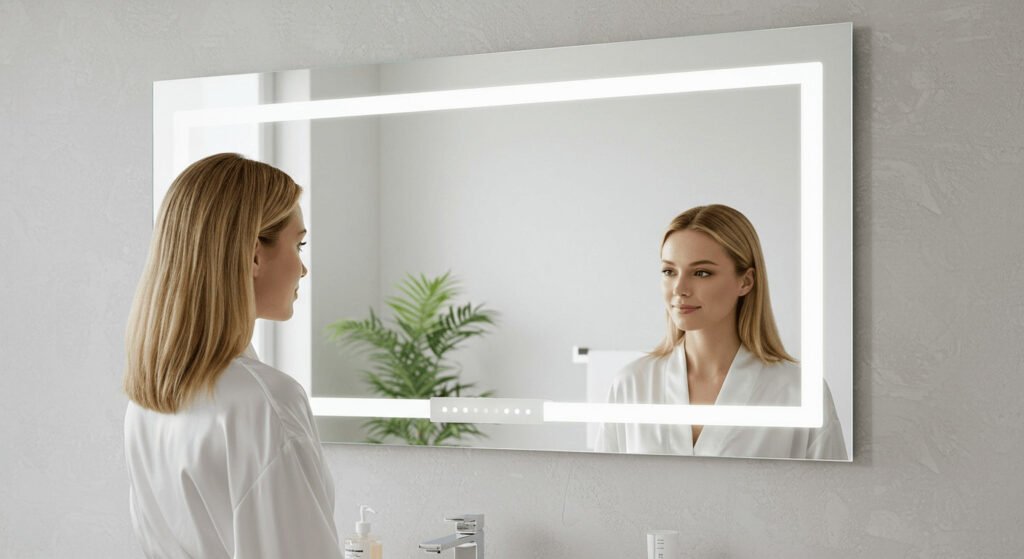
Table of Contents
ToggleWhat Is the Technology Behind LED Mirrors?
LED mirrors use the LED technology, which is noted for its energy efficiency and lifespan. These mirrors are outfitted with LED lights that produce little heat and consume significantly less electricity than standard lighting, making them an environmentally responsible choice.
LED lights are frequently incorporated in the frame or back of the mirror, illuminating through a diffusing panel. This enables a uniform distribution of light throughout the mirror’s surface, providing better lighting than traditional mirrors.
The illumination of LED mirrors may be changed in brightness, allowing consumers flexibility over the level of light they require. Additionally, many LED mirrors have touch sensors for quick activation, making them both useful and user-friendly. Illuminated mirrors are commonly used in restrooms and vanity spaces, where strong, even lighting is essential for everyday grooming duties.
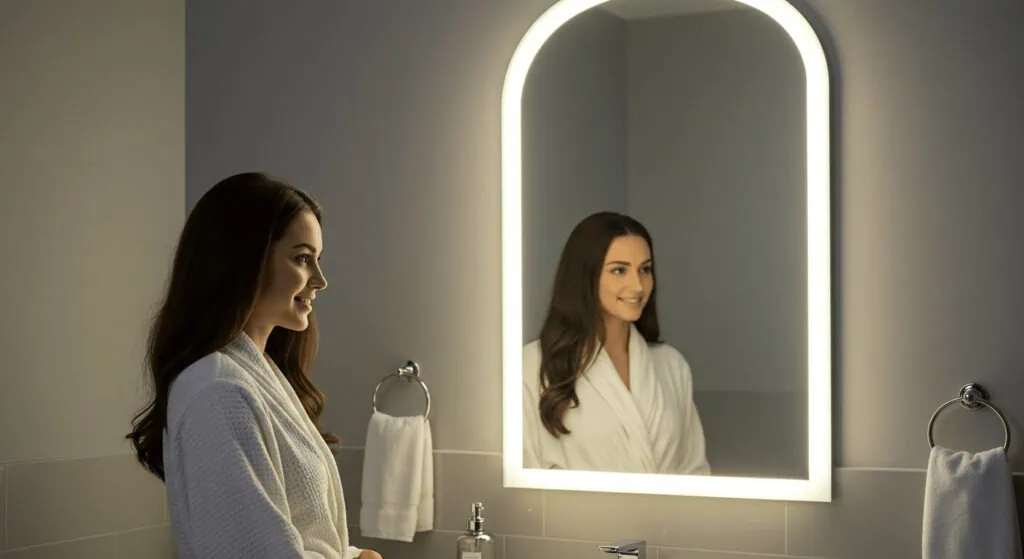
Why Do LED Mirrors Provide Better Lighting Compared to Regular Mirrors?
The fundamental benefit of LED mirrors is the quality of light they produce. Unlike regular mirrors, LED mirrors provide consistent illumination, which is critical for tasks requiring accuracy, such as applying cosmetics or shaving.
LED mirrors provide an equal dispersion of light, minimizing shadows and improving visibility. Whether you’re doing cosmetics or altering your haircut, the steady light improves detail and decreases eye strain.
In many versions, the light in LED mirrors can be adjusted to meet a variety of demands, from stronger lighting for cosmetics application to softer lights for a peaceful atmosphere. Smart bathroom mirrors are now available, with Bluetooth connectivity and touch sensors for easy operation.
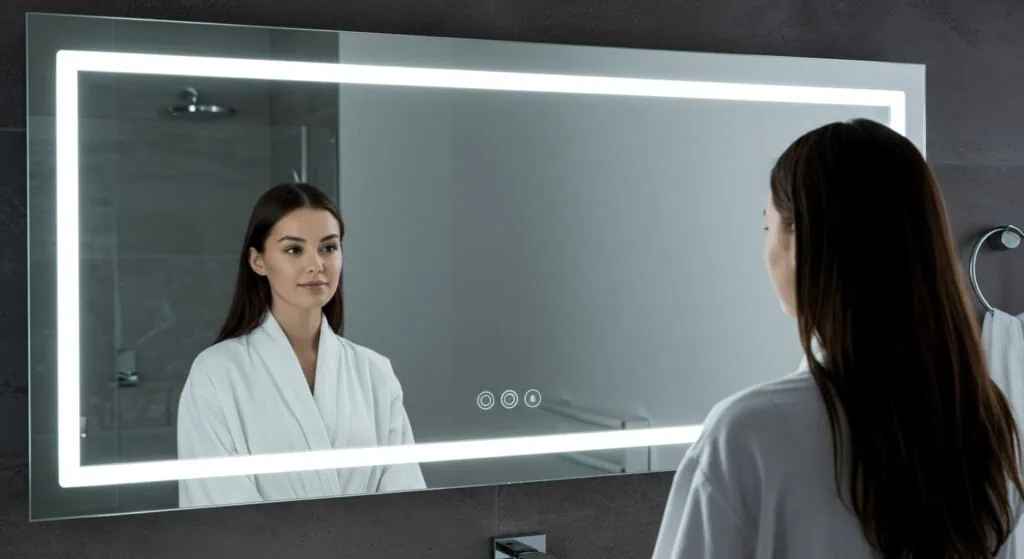
What Are the Benefits of Using LED Mirrors in Bathrooms or Vanity Areas?
LED mirrors are quite popular in bathrooms and vanity spaces due to their numerous practical benefits. They not only give excellent illumination but also provide a contemporary appearance to any room.
The advantages of adopting LED mirrors in bathrooms are energy economy, long-lasting lighting, and steady visibility. They are also ideal for grooming, providing clean reflections and minimizing shadows.
In addition to its illumination benefits, LED mirrors are sometimes equipped with anti-fog functions, which are ideal for bathrooms where mirrors tend to fog up after a hot shower. LED mirrors with lights may offer adequate illumination in bigger places, modifying the overall appearance of a room.
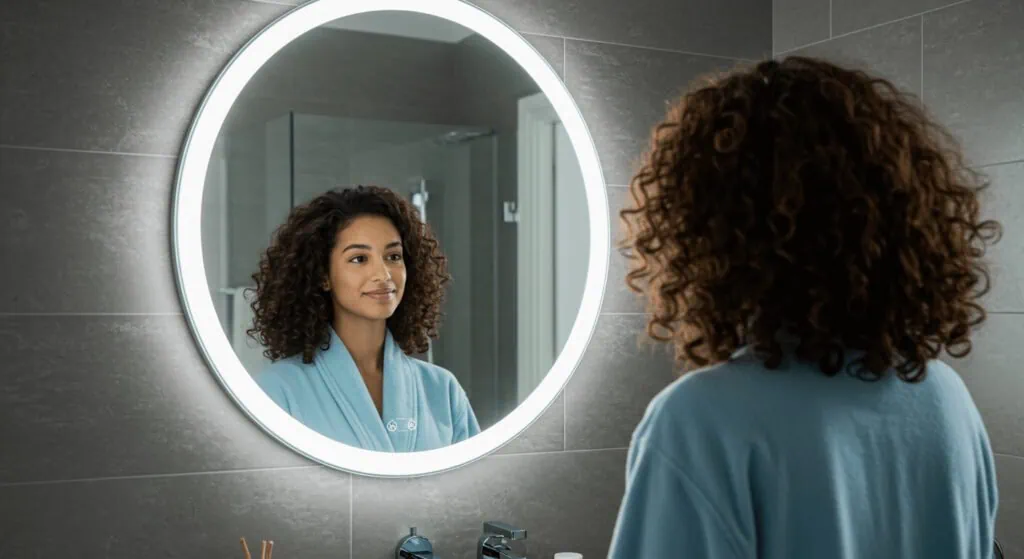
Are LED Mirrors Durable and Energy-Efficient?
LED mirrors’ increasing popularity can be attributed in part to their durability and energy economy. These mirrors are intended to last longer and use substantially less electricity than typical lights.
These mirrors’ LED lights endure for 30,000 to 50,000 hours on average. LED mirrors are a good long-term investment since they do not require regular bulb replacements.
LED technology allows these mirrors to spend less energy, resulting in decreased electricity costs over time. Many versions, such as battery powered LED mirrors, are even more efficient, requiring less maintenance and providing long-lasting performance.
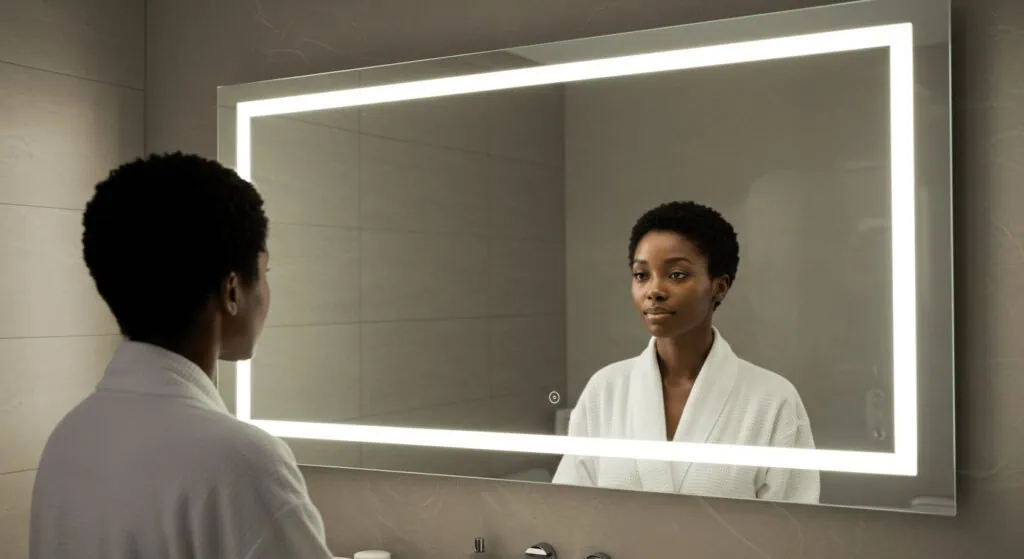
Do I Need a Special Power Source to Install an LED Mirror?
Depending on the type, LED mirrors may either be connected into a conventional power outlet or hardwired into your home’s electrical system. Before ordering, make sure you understand the precise installation requirements.
Most bathroom LED mirrors may be connected into normal outlets, however other types require hardwiring for enhanced functionality. If you are doubtful, refer to the installation manual or engage a professional to guarantee a good and safe installation.
Battery-powered LED mirrors do not require an external power source. These mirrors are particularly helpful in regions with restricted electricity connections or in smaller spaces, such as lighted bathroom vanity mirrors or lighted magnifying mirrors.
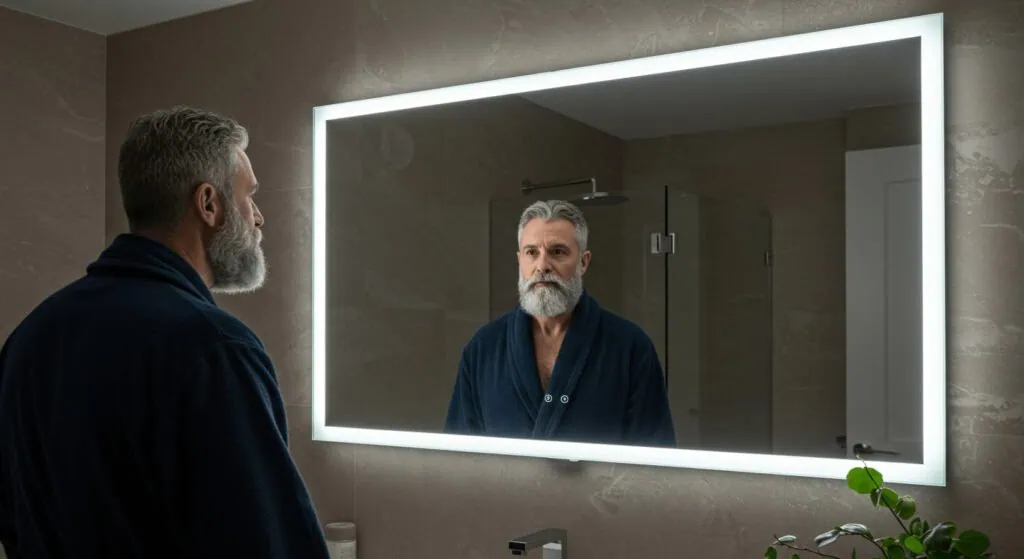
Do LED Mirrors Turn on with a Switch?
Many LED mirrors come with a built-in switch that allows you to turn them on and off manually. However, other versions have modern features like as touch-sensitive controls, which allow you to switch on the mirror just by tapping or swiping the surface. In addition, there are mirrors with motion sensors that activate the LEDs when they sense movement. These touch and sensor-based alternatives provide convenience and a contemporary appearance. The specific functioning of an LED mirror is determined by its design, thus it is critical to review the product characteristics before acquiring one.
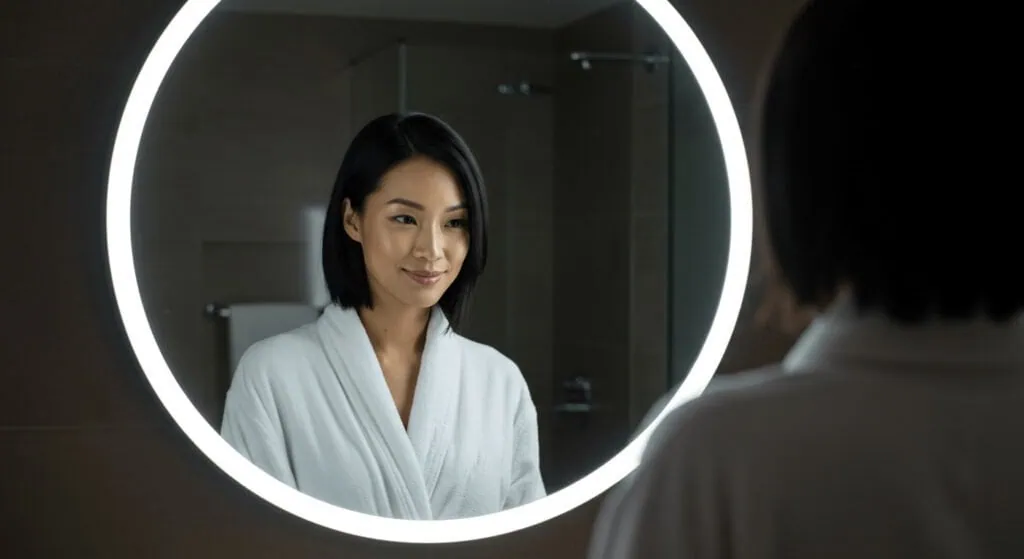
Do LED Mirrors Need to Be Plugged In?
While most LED mirrors must be connected into an electrical outlet, other varieties, such as battery-powered LED mirrors, operate without an external power supply. Standard LED mirrors require an electrical connection to power their LEDs. However, certain types, such as battery-powered LED mirror full-length alternatives, provide flexibility and portability, allowing users to install them wherever without requiring an outlet.
For greater flexibility, select LED mirrors with no electrical connection choices. These are especially handy for temporary settings or areas with limited access to power sources, providing easy lighting wherever needed.
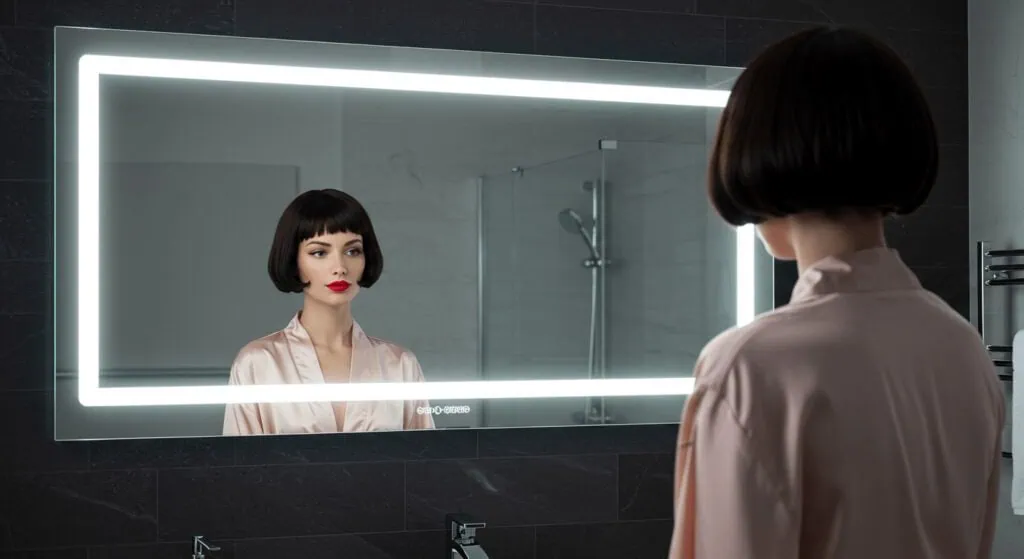
Are LED Screens Safe for Eyes?
There is rising worry regarding the safety of bright lights, particularly when utilizing LED mirrors for long periods of time. LED mirrors are completely safe for the eyes. Many have adjustable brightness settings, which ensures that the light is not too harsh. LED mirrors generate softer, more diffused light than conventional lighting, which reduces eye strain. Whether you’re using it for specific chores like cosmetics application or merely ambient illumination, the changeable settings assure your comfort.
Are LED Mirrors Safe When Used?
Yes, LED mirrors are typically safe when used properly. They are built with safety features including low-voltage circuits and sturdy materials to limit the potential of electrical mishaps. Many models also have safety certificates, ensuring that they fulfill international requirements. However, in order to avoid electrical faults, LED mirrors must be correctly installed, particularly when waterproofing in bathrooms. Regular maintenance, as well as ensuring the mirror’s wiring is in good working order, serve to assure long-term safety. As with any electrical item, following the manufacturer’s instructions is essential for safe use.
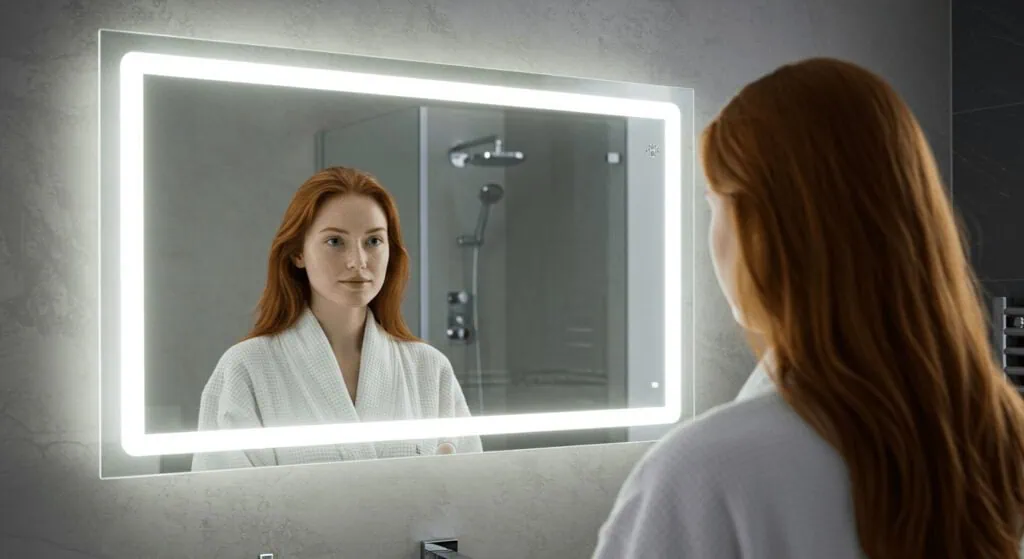
How Long Do LED Mirror Lights Last?
One of the advantages of LED mirrors is their long lifespan. In contrast to classic mirrors with ordinary light sources, you will not need to replace bulbs on a regular basis. LED mirror lights generally last between 30,000 and 50,000 hours, making them far more robust than conventional bulbs. This results in fewer frequent replacements and long-term savings. Their longevity and energy efficiency make them an excellent choice for homes, hotels, and commercial buildings. Many models also come with warranties, providing further piece of mind.
Do LED Mirrors Use a Lot of Electricity?
LED mirrors, unlike traditional lighting systems, are designed to use minimum power while providing brilliant and even lighting. These mirrors need relatively little electricity due to their energy-efficient LED lighting. LED mirrors with lights save energy expenses, making them an environmentally beneficial choice for both households and businesses. LED mirrors, with features such as dimming settings and automated brightness changes, provide customers control over how much electricity they consume. This versatility allows you to enjoy ideal illumination without worrying about excessive power expenses.
Why Are LED Mirrors So Expensive?
While LED mirrors may be more expensive than ordinary mirrors, the price reflects the superior technology and additional benefits they provide. LED mirrors are more expensive since they employ high-quality LED illumination, have backlit designs, and other advanced features like touch sensors, anti-fog technology, and smart capabilities. These characteristics make them a premium choice for modern bathrooms and vanity areas. The initial cost of an LED mirror can be compensated by its durability, energy efficiency, and extended life. These advantages accumulate over time, resulting in long-term savings, making them an excellent addition to your house or company.
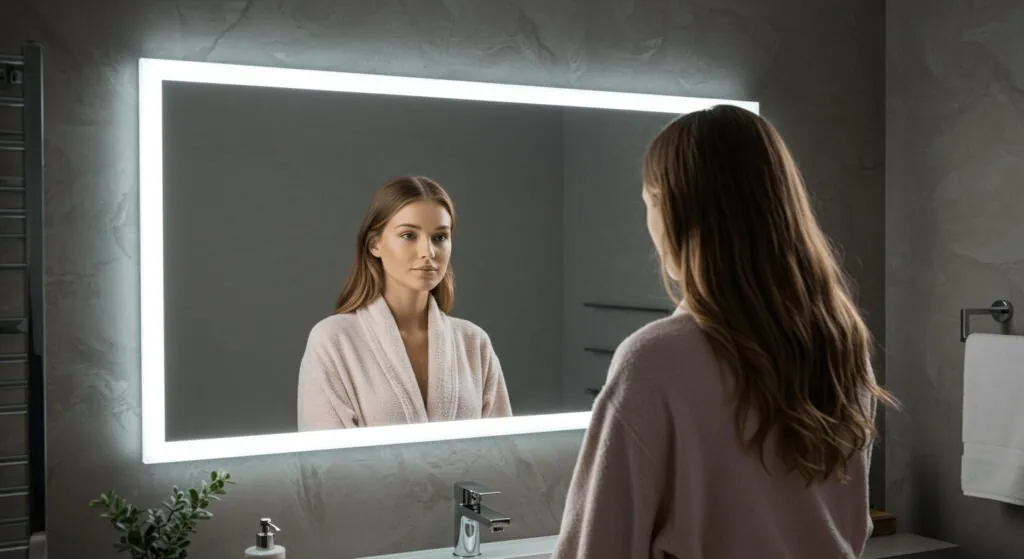
Do You Need an Electrician to Install an LED Mirror?
The installation of LED mirrors might vary based on the type. Some may be installed by the homeowner, but others may require expert assistance. If the LED lighted mirror needs to be connected into your home’s electrical system, you should employ an experienced electrician to guarantee a safe installation. Installing simpler plug-in models is typically simple. Before you install your LED mirror, always refer to the installation manual. For those with complicated features, such as Bluetooth bathroom mirrors or touch light mirrors, it is advisable to obtain expert assistance to ensure that everything is properly and safely installed.
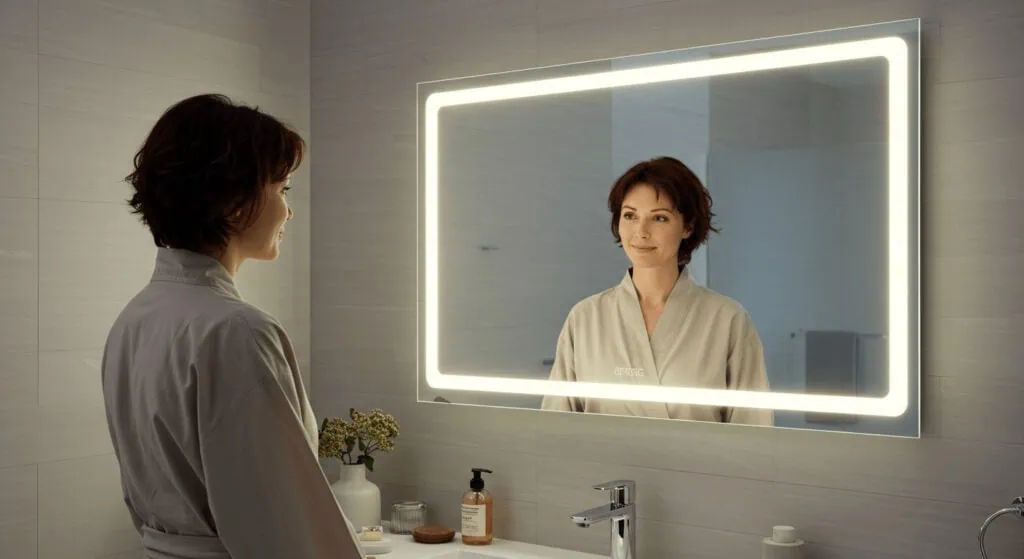
Summary
LED mirrors combine sophisticated technology, energy efficiency, and long-term performance. Understanding how they function and the many benefits allows you to make an informed decision when selecting the ideal mirror for your requirements.


